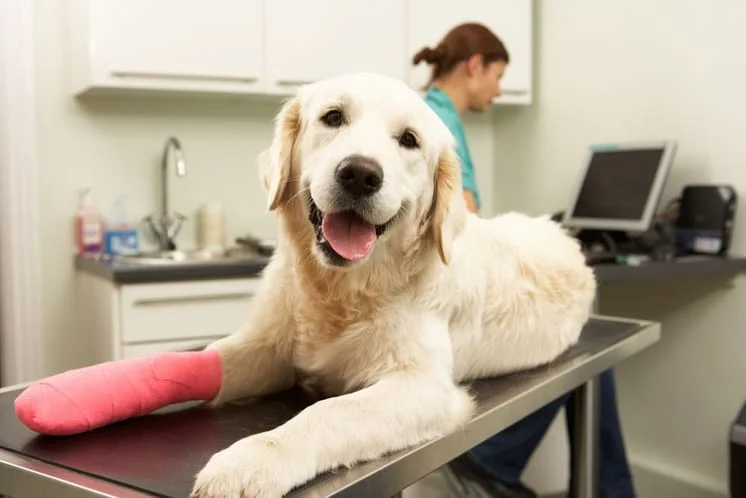Orthopedic surgery in veterinary medicine addresses conditions related to bones, joints, ligaments, and muscles, providing essential relief from pain and discomfort for our cherished pets.
This brief article reviews when to seek orthopedic care, the various treatment options available, and the commitment to your pet’s safety and comfort throughout the process.
Why would my pet need orthopedic surgery?
Orthopedic surgery offers vital solutions for pets suffering from a range of conditions. It is often recommended for animals with joint problems, torn ligaments, broken bones, or congenital issues. Among the most common orthopedic surgeries is the repair of the cranial cruciate ligament (CCL), also referred to as the Anterior Cruciate Ligament (ACL). These surgeries aim to restore mobility and alleviate pain, allowing your pet to lead a happier and more comfortable life.
When should I seek orthopedic care for my pet?
It’s crucial to monitor your pet’s movements and behavior for any unusual changes that may indicate an orthopedic condition. Typical symptoms of orthopedic disorders include difficulty getting up, intermittent leg favoring when walking, limping with swelling in the leg, stiffness, or a decrease in activity level. If you observe any of these signs, a prompt visit to a veterinary facility for an examination is advised.
How are typical orthopedic injuries treated?
- Tibial Plateau Leveling Osteotomy (TPLO): TPLO is a reconstructive surgery designed to repair a torn ligament by altering the dynamics of the knee joint. This procedure renders the ligament unnecessary for knee stability by counteracting the forces that caused the initial tear. The surgery involves cutting and repositioning the tibia bone, securing it in place with metal plates. TPLO offers an effective, long-term solution for this injury.
- Tibial Tuberosity Advancement (TTA): TTA is another reconstructive surgery for torn ligaments, which realigns the dynamics of the knee joint. This surgery employs titanium implants and boasts a swift recovery period, ensuring your pet can regain mobility with minimal delay.
- Luxating Patella Surgery: Patellar luxation, a dislocated kneecap, is commonly observed in small breed dogs. This condition occurs when the kneecap dislocates from its normal position to the inside of the knee, causing intermittent lameness and potential popping sounds. Treatment ranges from knee braces for milder cases to realignment surgery for more severe luxations. A thorough evaluation at our facility will determine the best approach for your pet.
- Fracture Repairs: Fractures are breaks in bones or cartilage and can result from trauma, disease, or bone tumors. Treatment options vary from external splinting to advanced internal plating, depending on the nature and severity of the fracture. Our veterinarians are skilled in providing the necessary care for fracture repairs.
Orthopedic surgery is a vital component of veterinary care, offering hope and relief for pets experiencing pain and discomfort in their bones, joints, ligaments, and muscles. Throughout the process, your pet’s safety and comfort are priority to us. By entrusting your pet to dedicated veterinary professionals, you ensure they receive the care necessary to lead a happier, more comfortable life!

